Peter Rashkin: If you’re attending WordCamp Long Beach from out of town, we hope you’ll have the opportunity to get to know our city’s many charms. Chris and I decided to explore a few of them that you, too, might enjoy.
Christiana Mohr: In June, Peter and I went on a three-hour walking tour of Downtown Long Beach’s historic architecture. This month, we revisited some of our favorite buildings, saw some new sites and ate lunch at an awesome venue. Enjoy!
July Exploration Slideshow
Downtown Architecture Tour
Psychic Temple of the Holy Kiss
Peter: This month, we went for a long walk through downtown and along the coast. We met at the intersection of Long Beach and Broadway in downtown LB, in front of the Psychic Temple of the Holy Kiss. Built in 1905, this Romanesque Revival structure is the city’s second-oldest commercial building. We were here last month on a walking tour of downtown architecture.
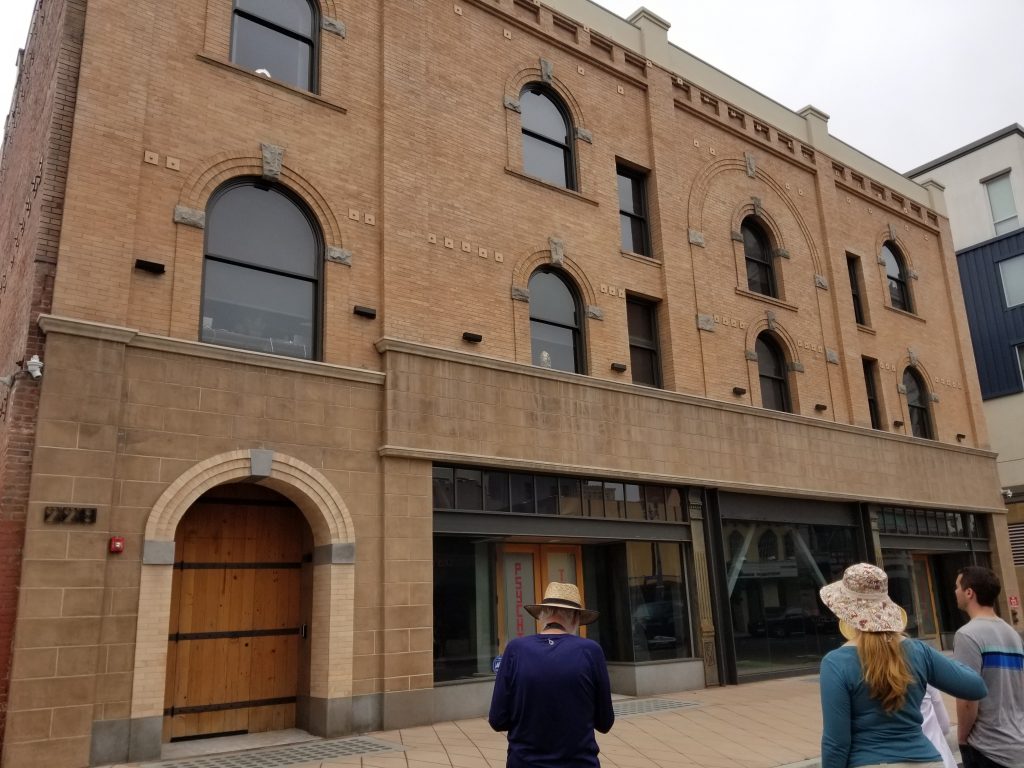
Psychic Temple of the Holy Kiss 
Our old Meetup location
Chris: The Psychic Temple of the Holy Kiss sits across from our old Meetup location. It was used by Baptist minister Rev. Price about a century ago as a meditation center. Rev. Price’s habit of selling bogus stock bloomed into a financial scandal that got him kicked out of his own charity.
After he left, the building was bought by a parishioner, who turned it into a hotel. It was also used as a WWII honky tonk. It’s now owned by a tech company and is being carefully restored.
All the Styles, All Together
Chris: Like many of the buildings downtown, the Psychic Temple combines different architectural styles. Here are more gorgeous buildings you can visit:
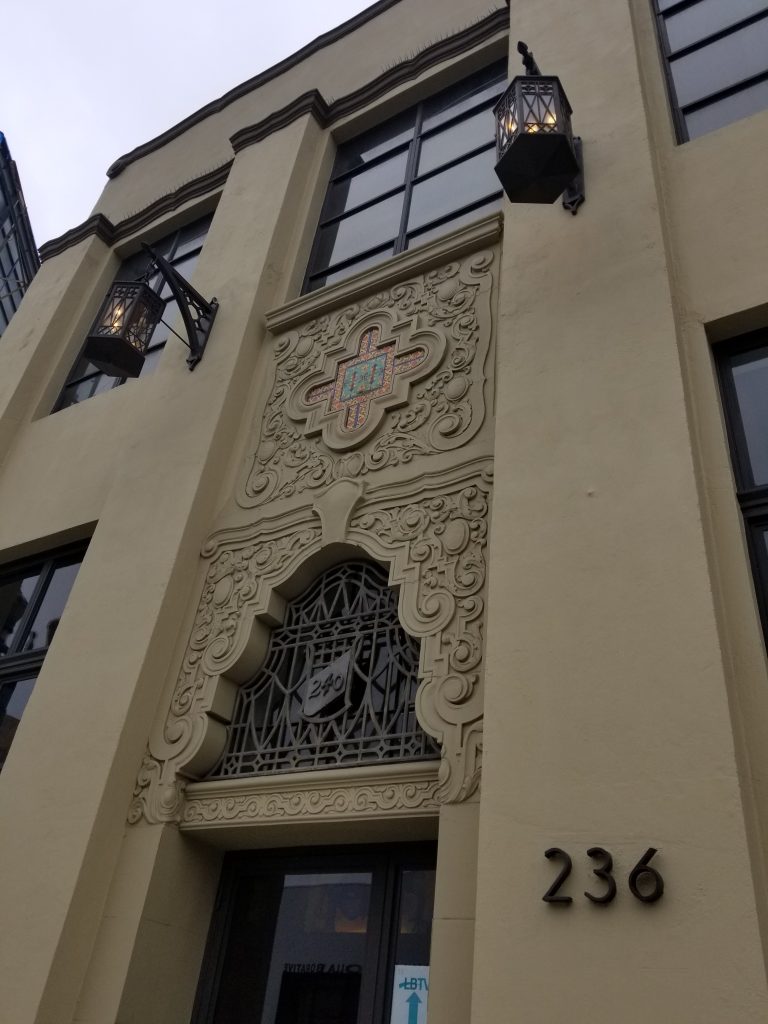
The Arts Building 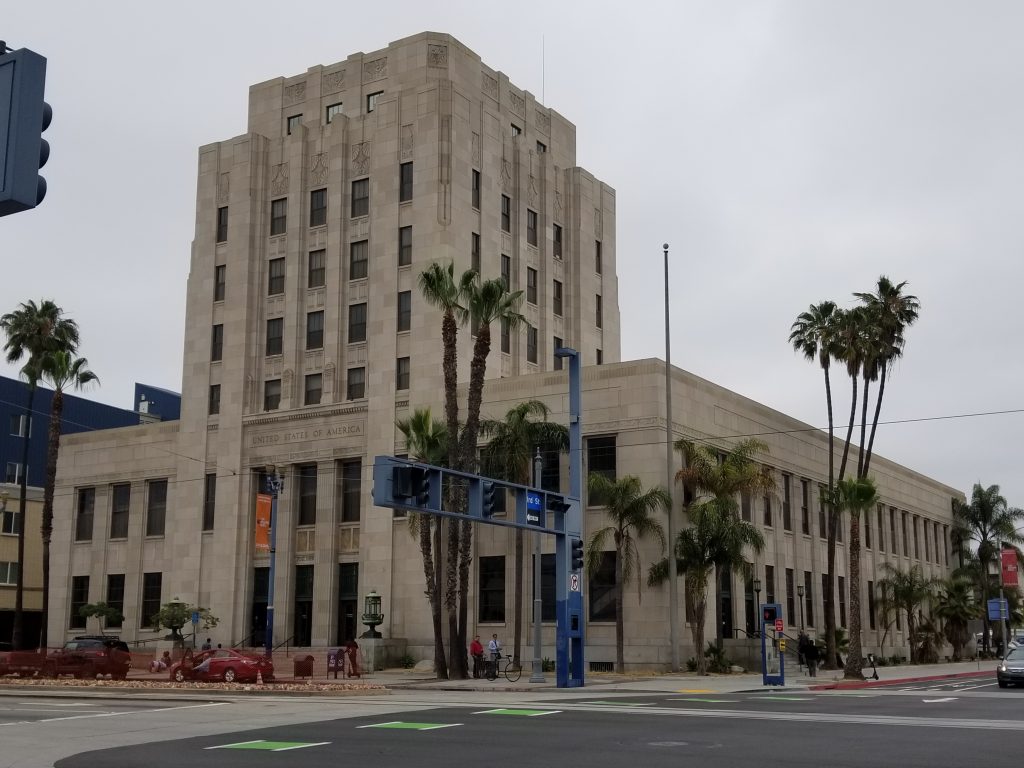
Post Office 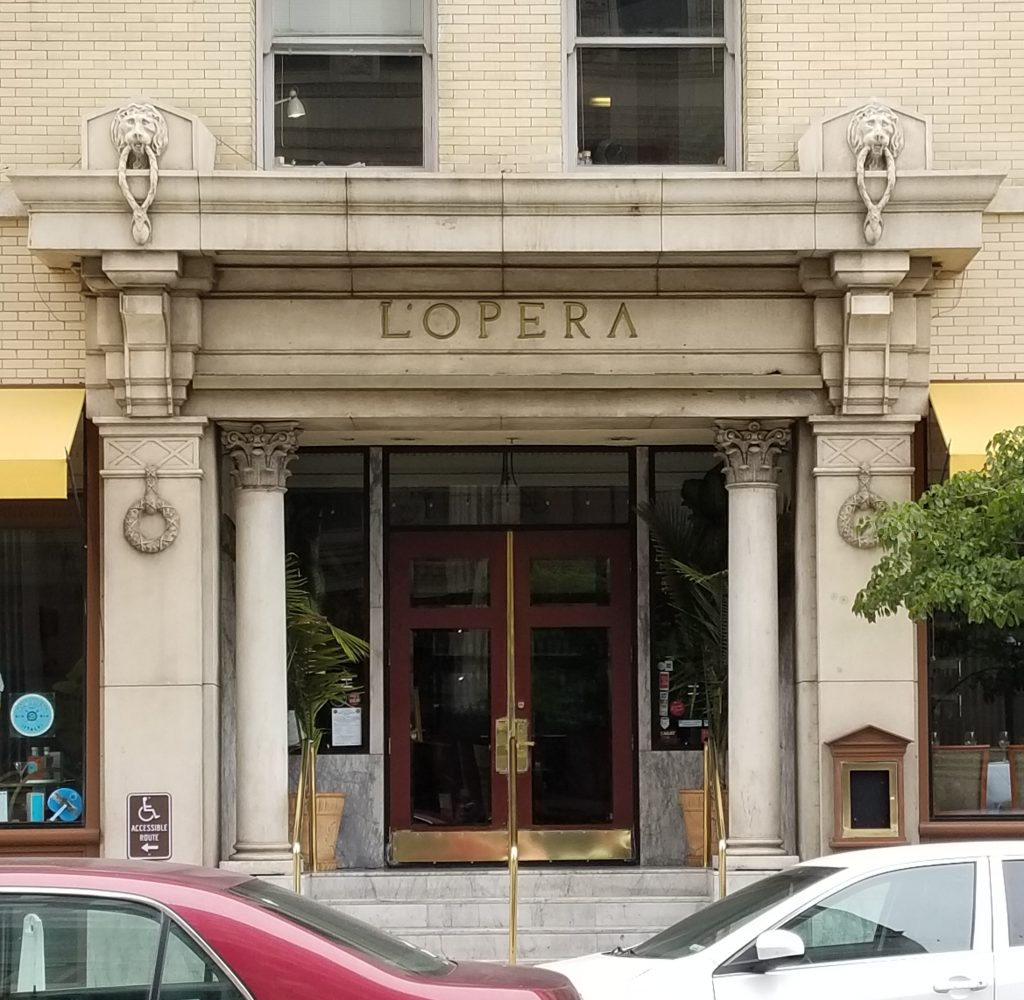
L’Opera 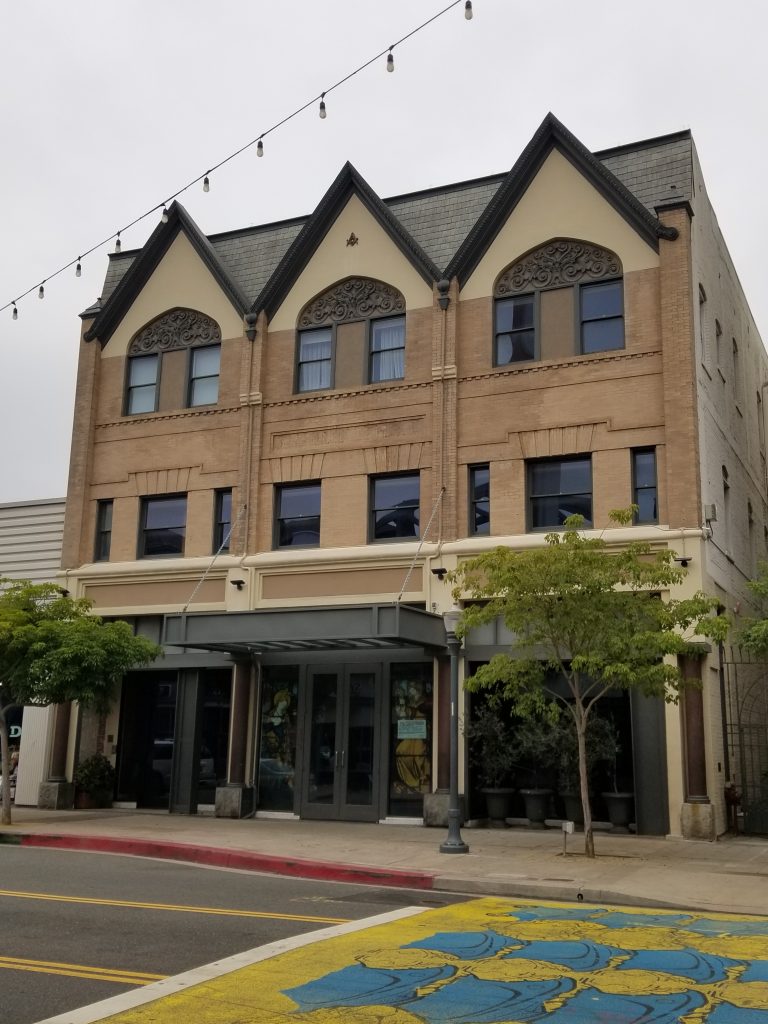
Current mayor’s home 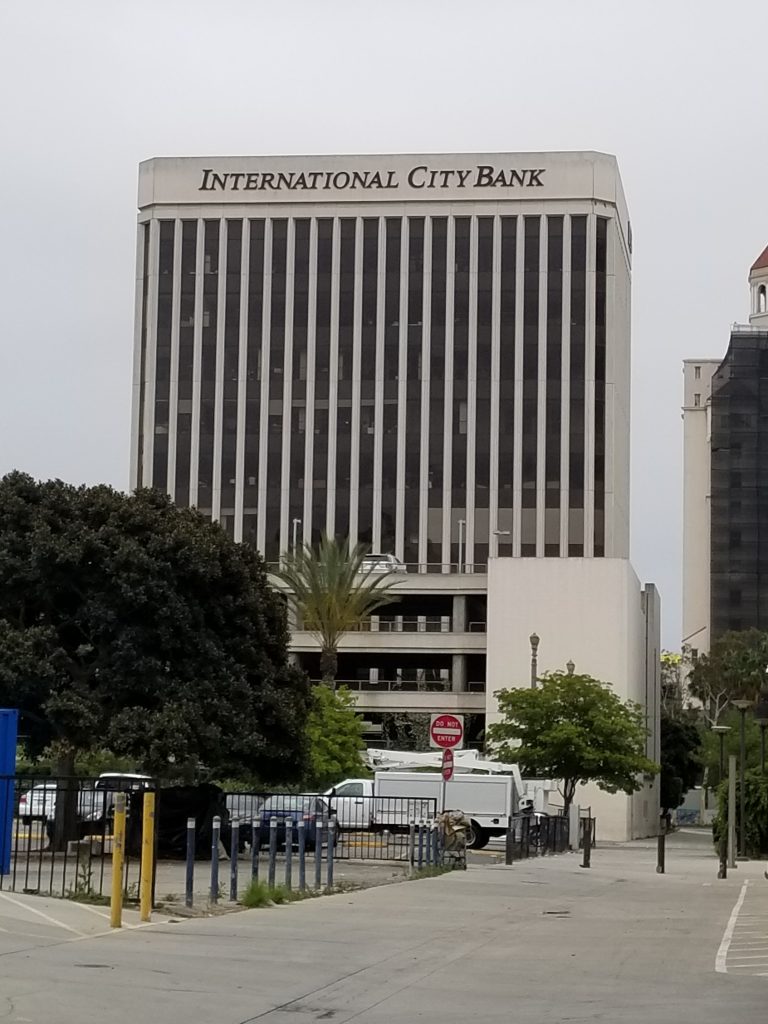
Modern architecture 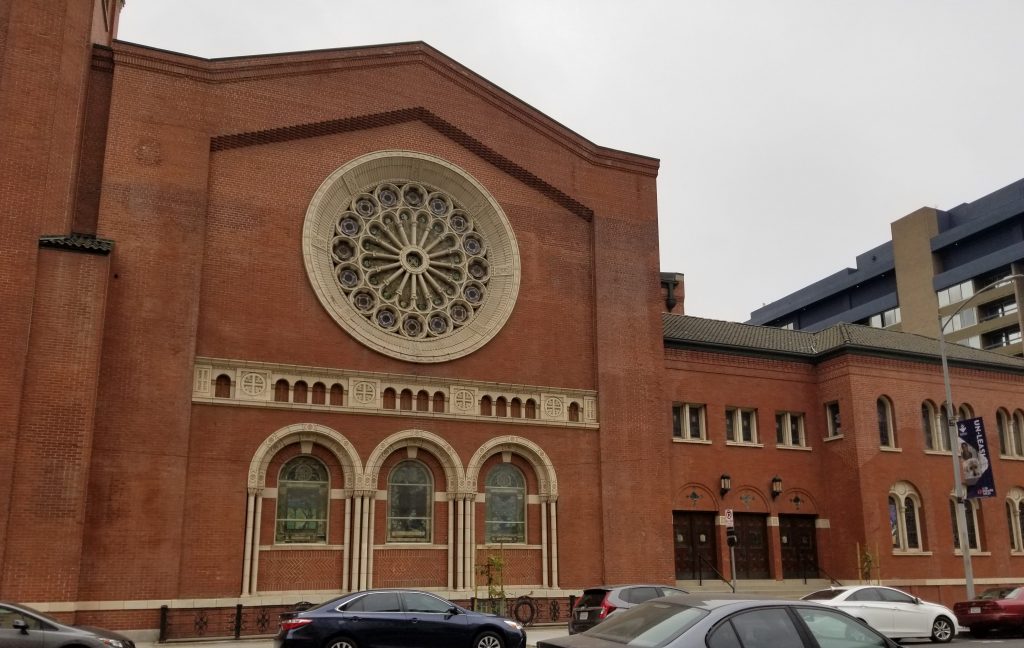
Romanesque Revival 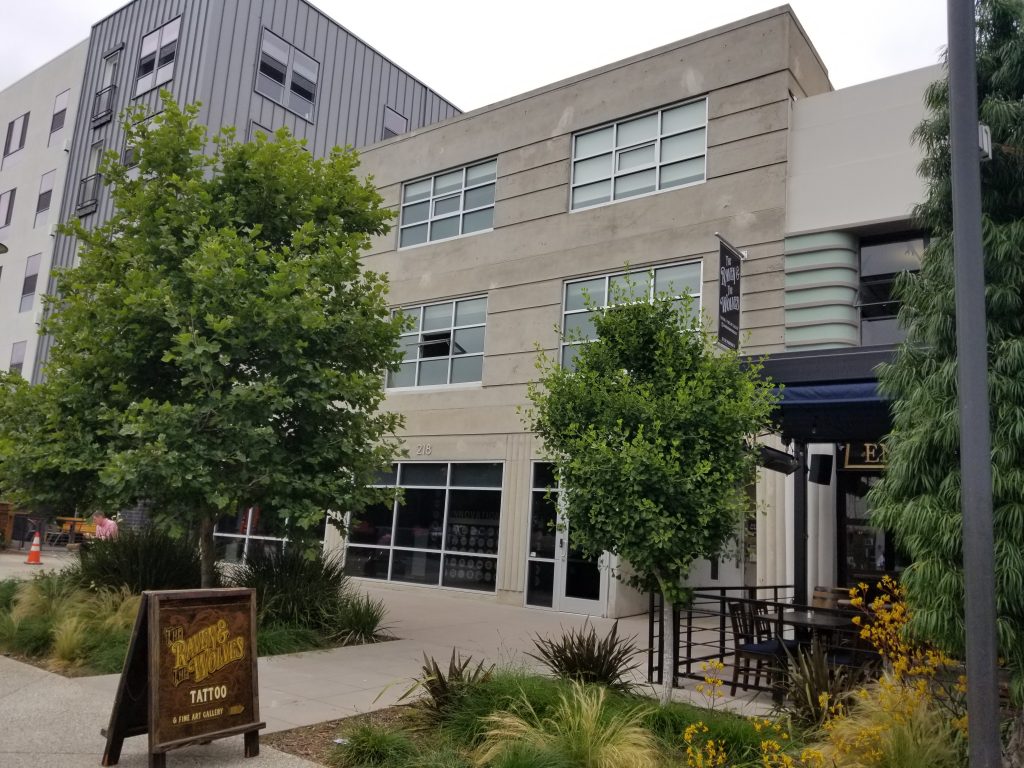
Left to right: Contemporary, Modern (International Style), Streamline Moderne
Middough’s Men’s Shop
Peter: We wandered a bit in LB’s original commercial district. I particularly like Middoughs’ Men’s Shop.
Chris: The Middough building sits next to the Edison Theatre. It used to have a Boy’s and Men’s Shop, small claims court, and a gym. Now, it’s condominiums.
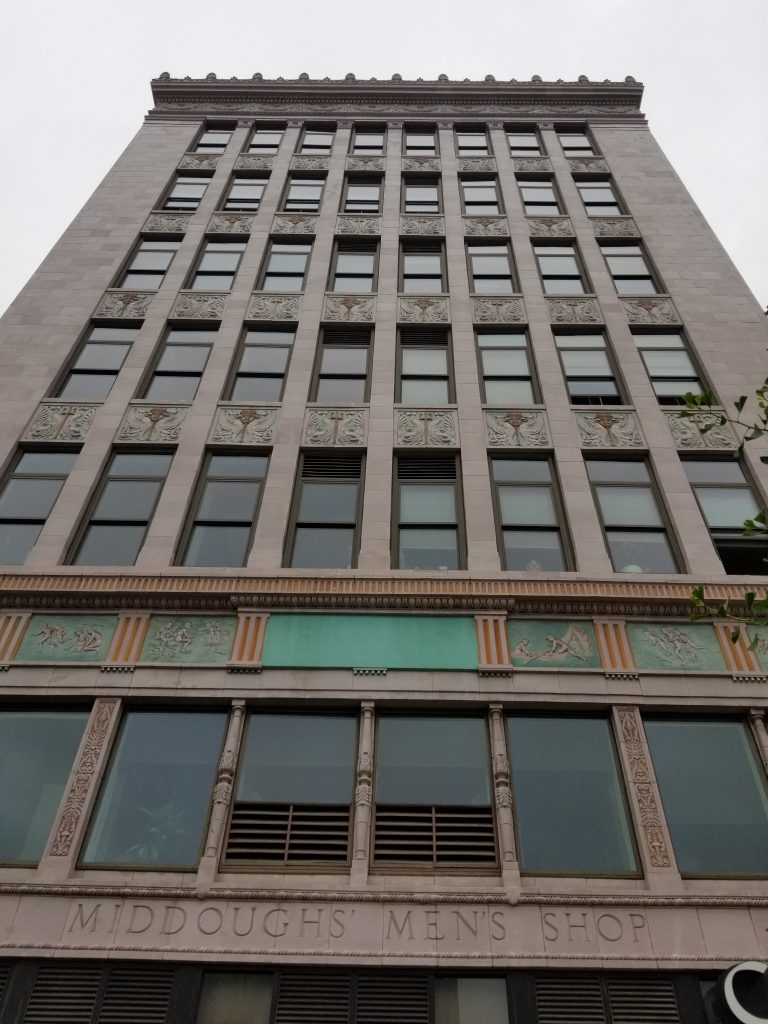
Middough’s Men’s Shop 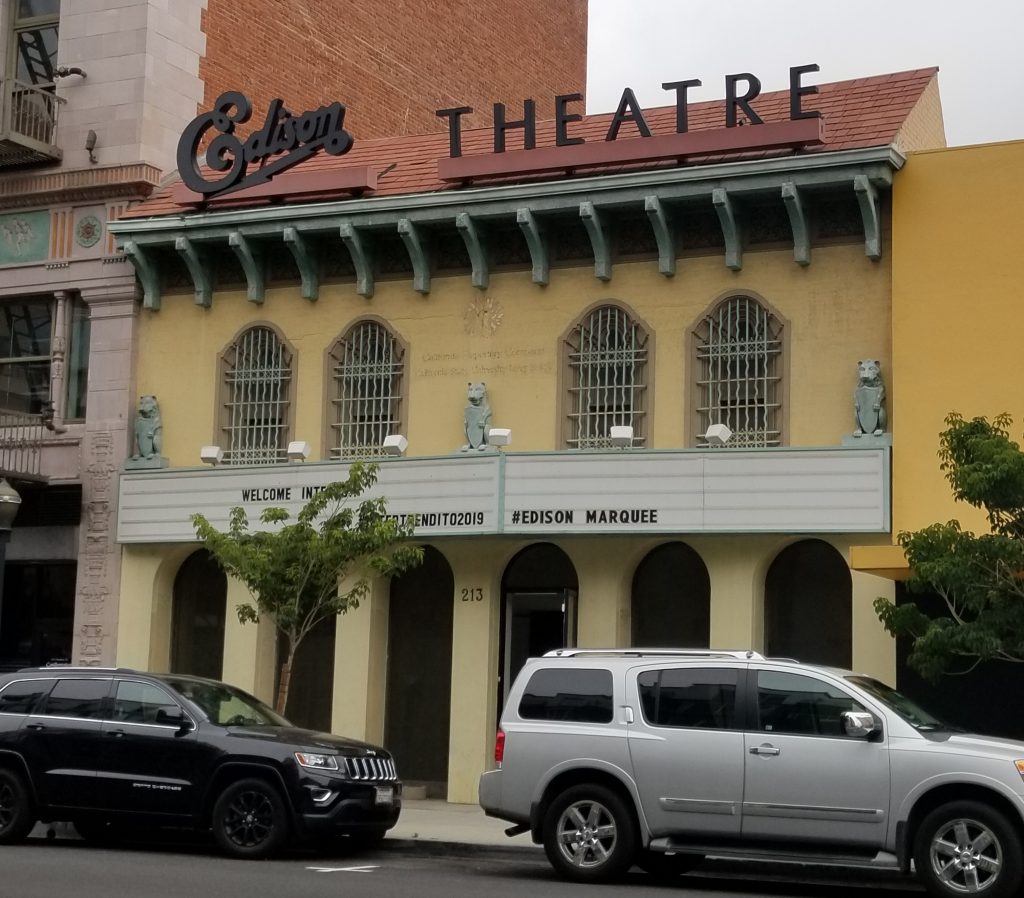
Edison Theatre
Chris: Middough’s is a traditional three-part Beaux Arts skyscraper with typical Greek Revival motifs – flattened reductions of Neoclassical columns and realistic depictions of animals, plants, and people. But it also showcases some traditional Art Deco details like egg-and-dart, dentile teeth and stylized honeysuckles (often mistaken for shells). A mismatched Art Deco lobby was inserted on the ground floor in the 1930s.
The Federal Bank
Chris: Another Greek Revival building to check out is The Federal Bank. It’s now a restaurant. You’re welcome to admire the building’s filigree and its magnificent ceiling. The hostesses are used to site-seers.
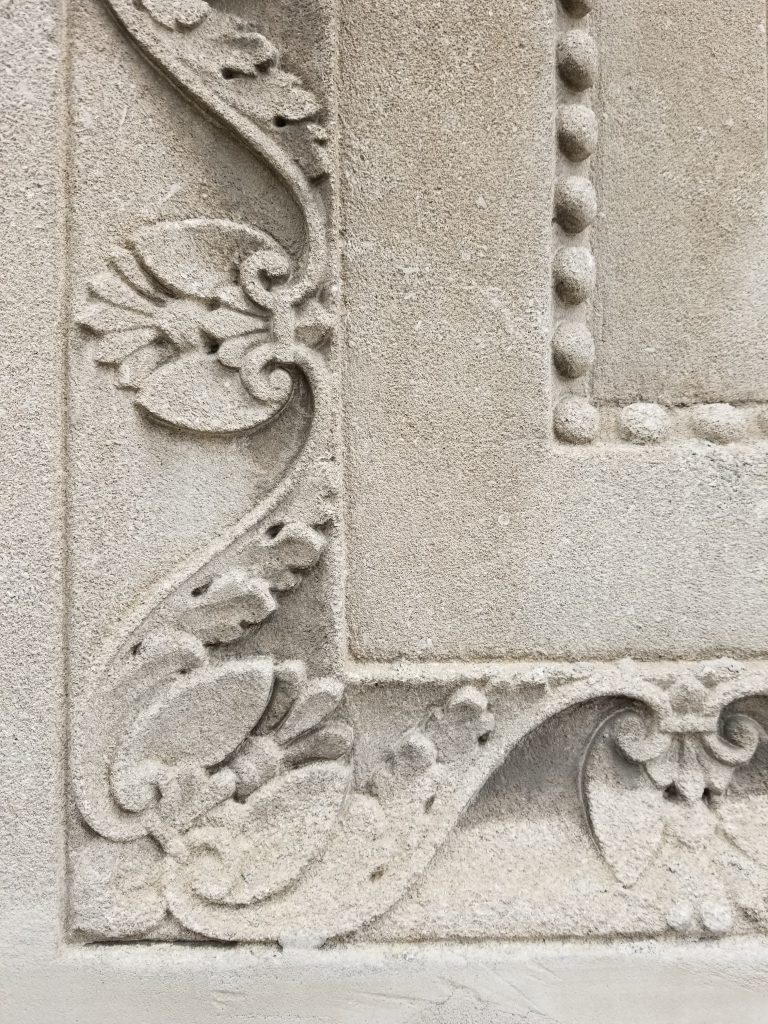
Close-up of stone facade 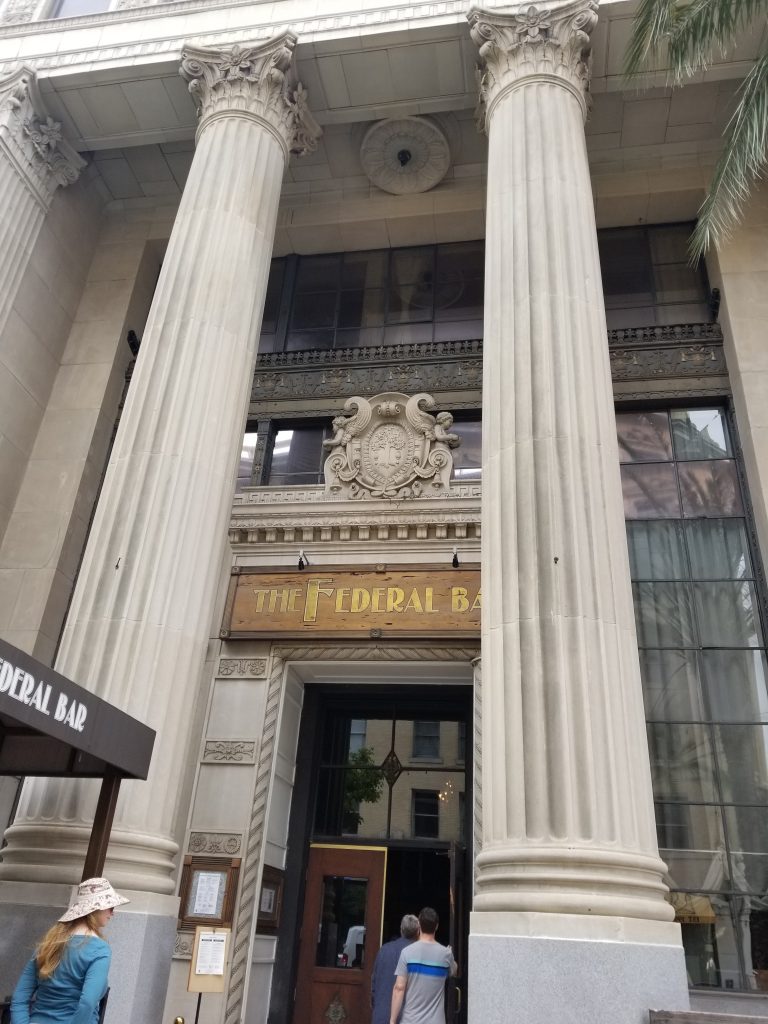
Formidable entrance 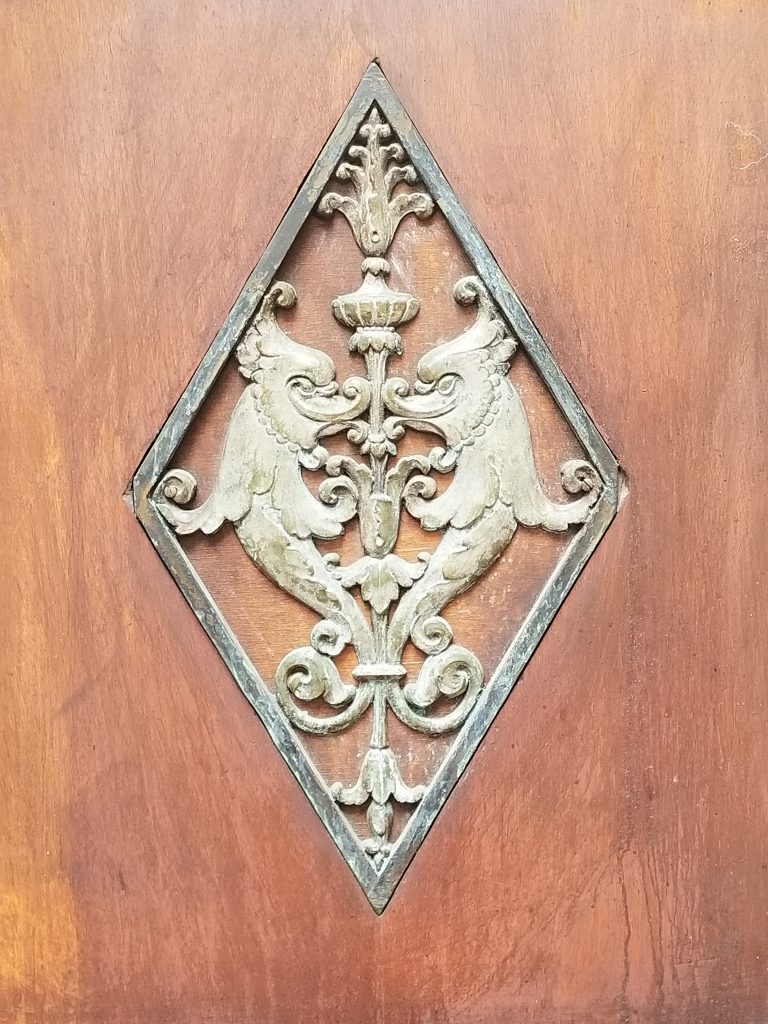
Original filigree 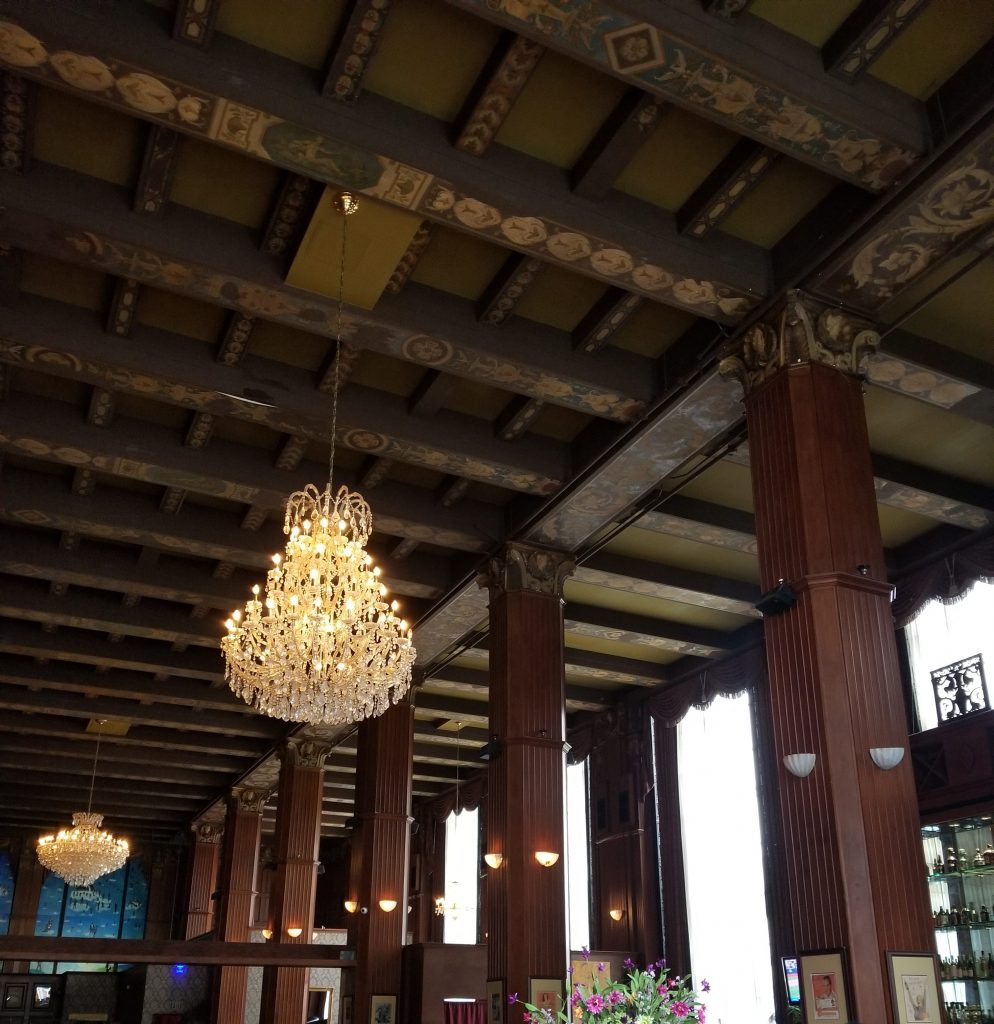
Greek Revival decor
Shannon’s on Pine
Chris: My favorite downtown building is definitely Shannon’s. Shannon’s is Long Beach’s finest example of Art Deco. The colors and abstract motifs helped inspire this year’s WordCamp Long Beach theme. And the facade, wood interior, metal banisters, and tile are all original.
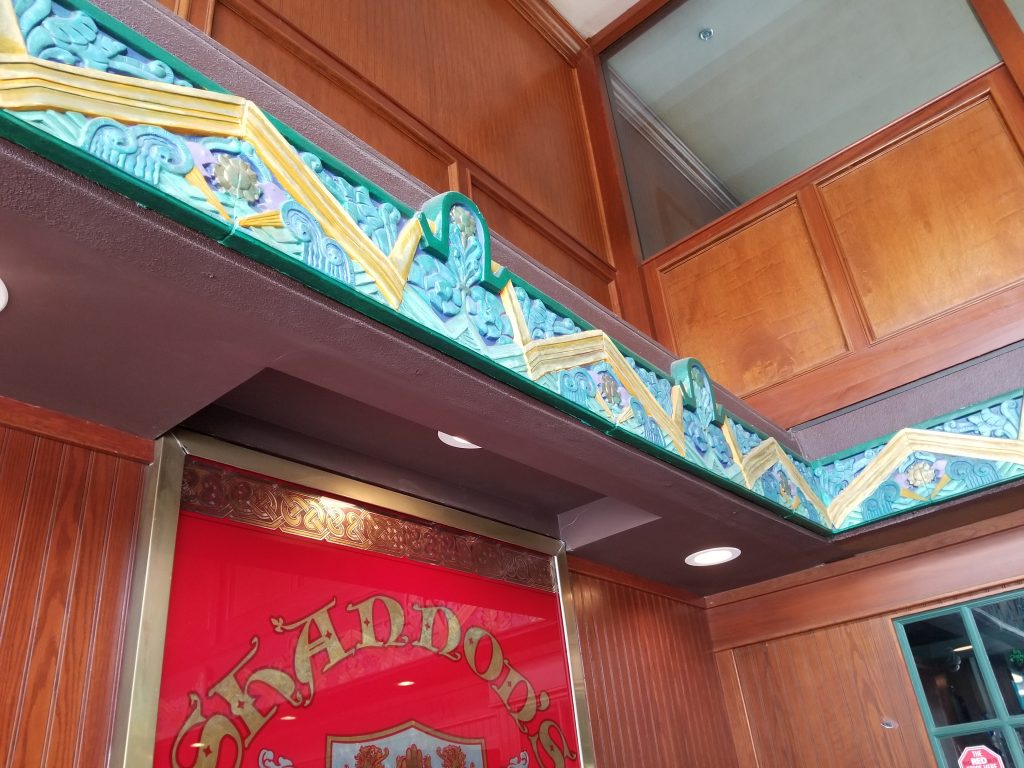
Original wood paneling 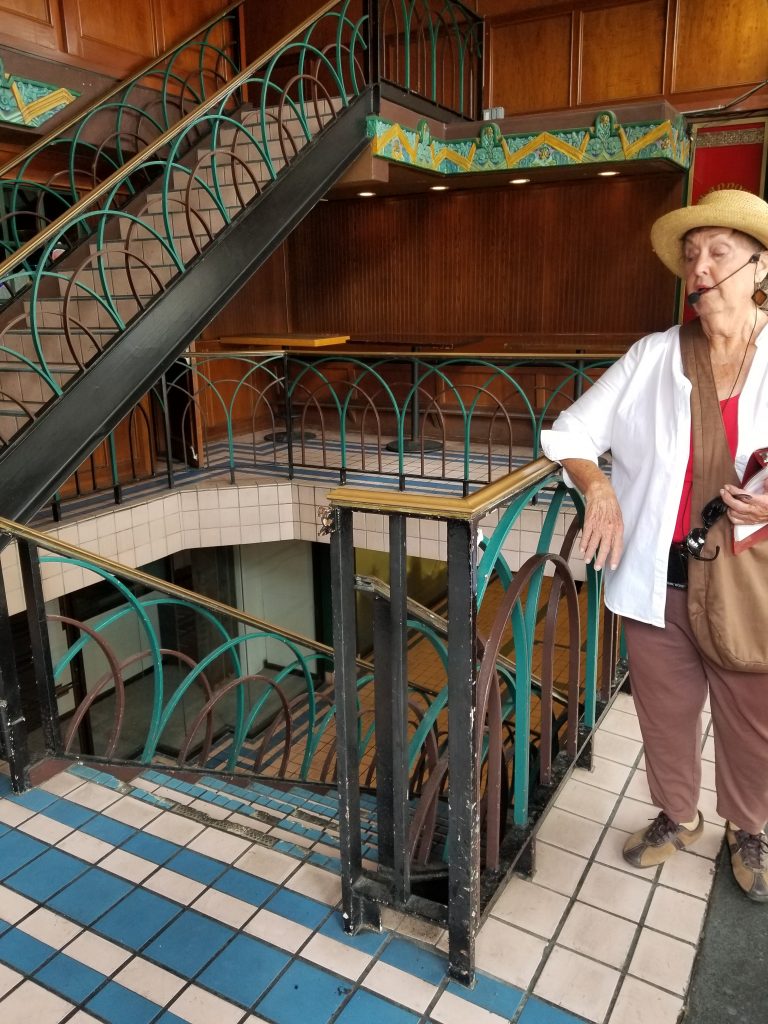
Original rails and tile 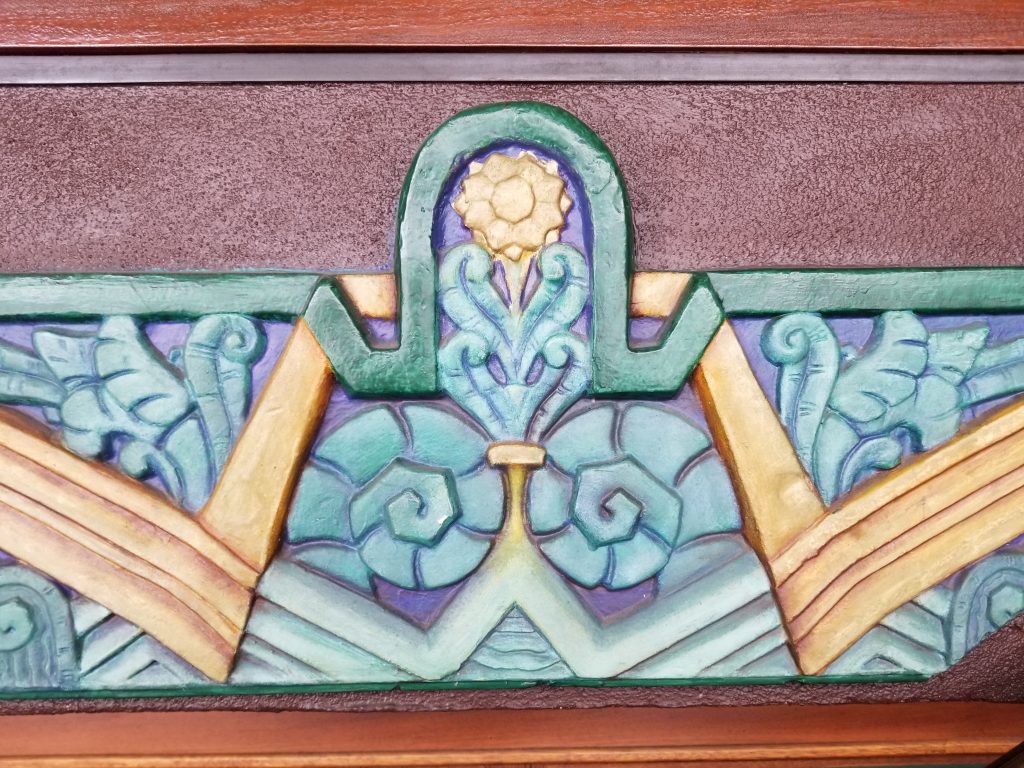
Our WordCampLB colors! 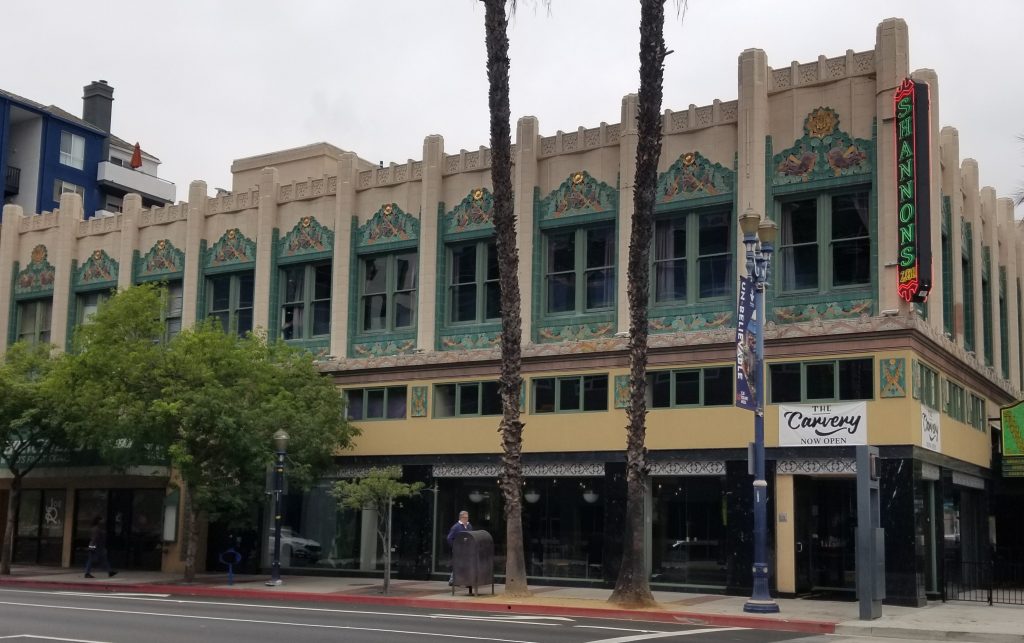
Original exterior
The Willmore
Chris: We finished last month’s architecture tour at The Willmore, an early twentieth century luxury condo high-rise with original art and furnishings boasting a panoramic view of the city from its rooftop garden.
The building was named after William Erwin Willmore, Long Beach’s first real estate developer. It was originally designed to be a three-part building like many of the other downtown skyscrapers built in the Beaux Arts style. The builders stopped after they’d built just two wings, but it’s still stunning.
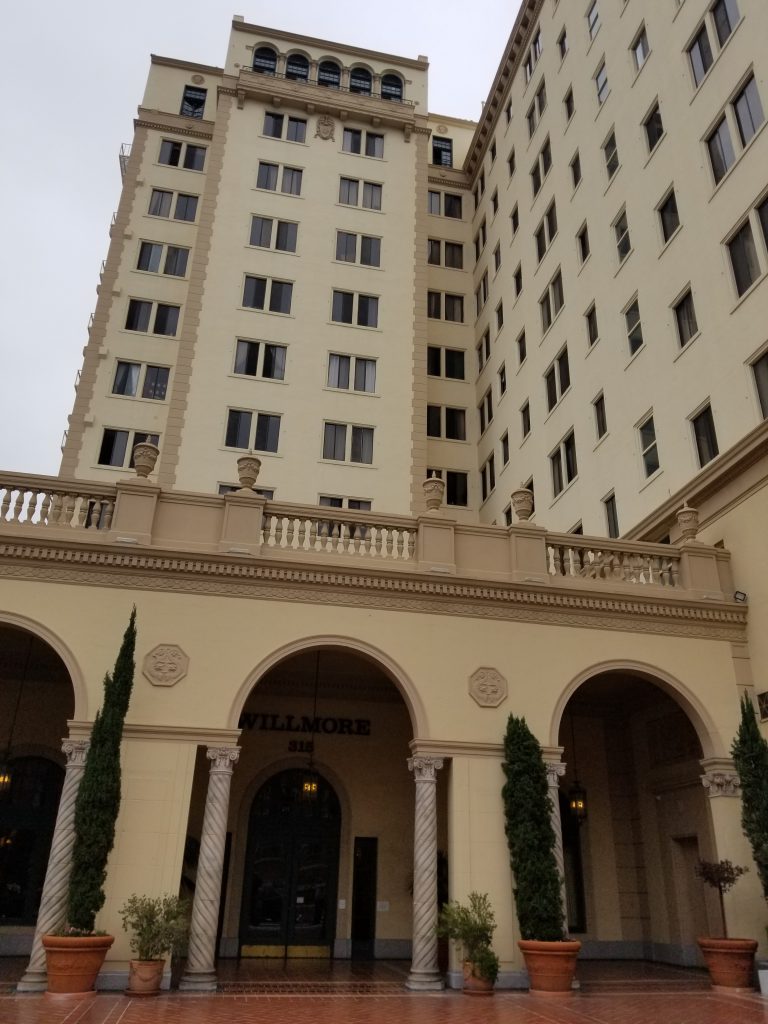
The Willmore entrance 
Solarium 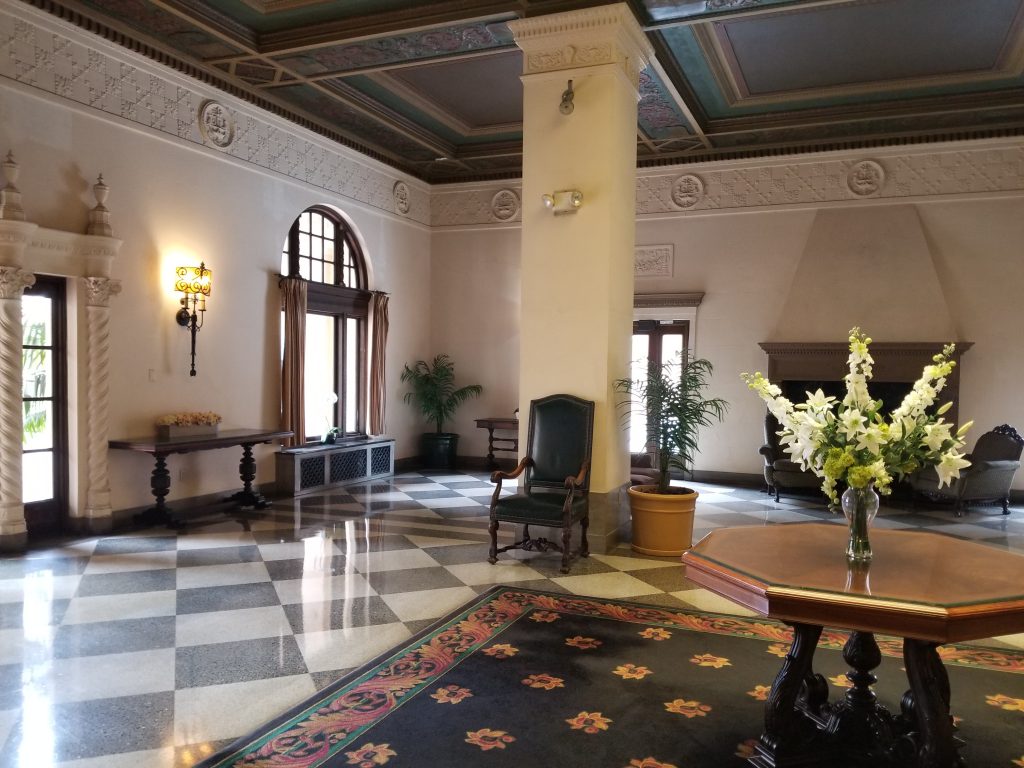
Ground-floor lobby 
Panoramic rooftop view
Stroll Down the Promenade
Peter: Next we wandered down the Promenade to the Long Beach Performing Arts Center and among the fountains. Got some pix of the whale mural at the Pacific Ballroom.
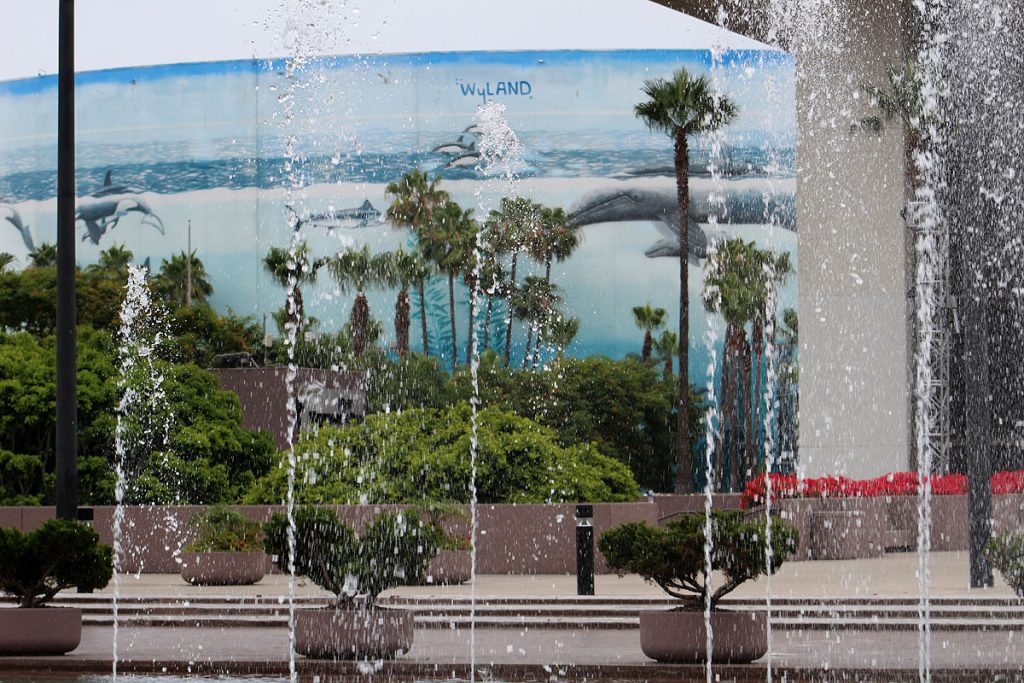
Performing Arts Center fountains 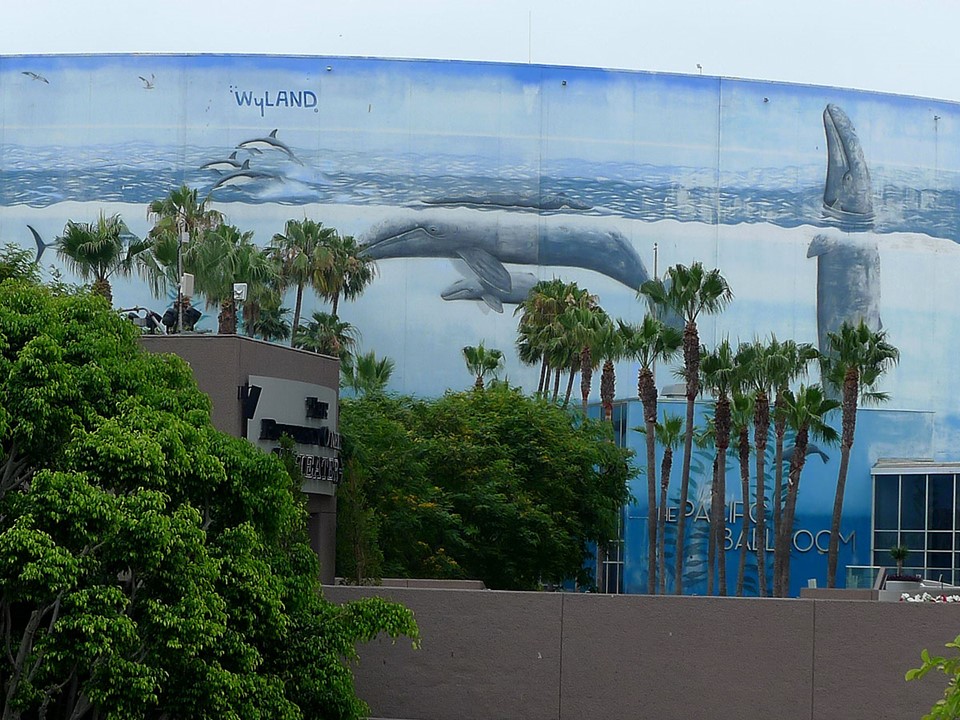
Whale mural
Bluff Park
Peter: Then over to Bluff Park. The park runs more than a mile along the bluff, overlooking the beach and the Harbor. From the Long Beach Museum of Art at one end, it leads almost to Belmont Pier.
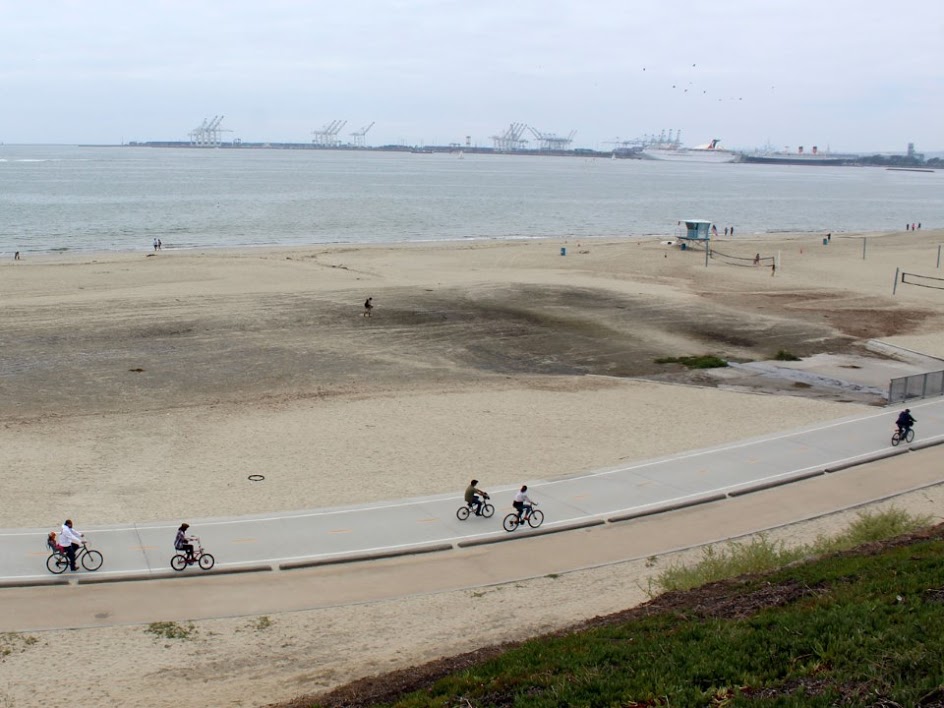
Cruising down the coast 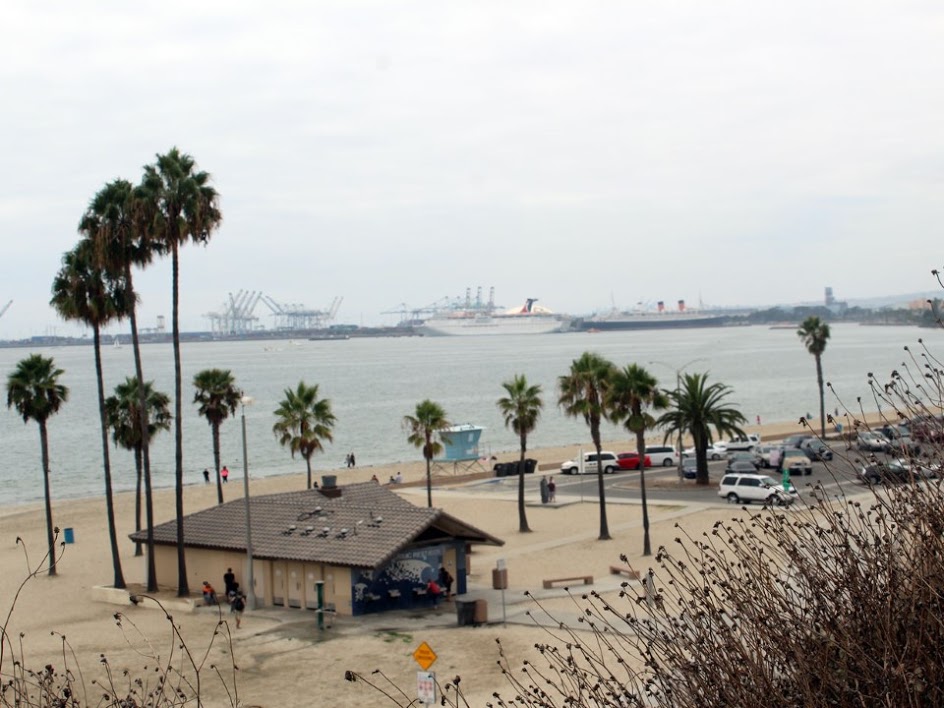
Port of Long Beach 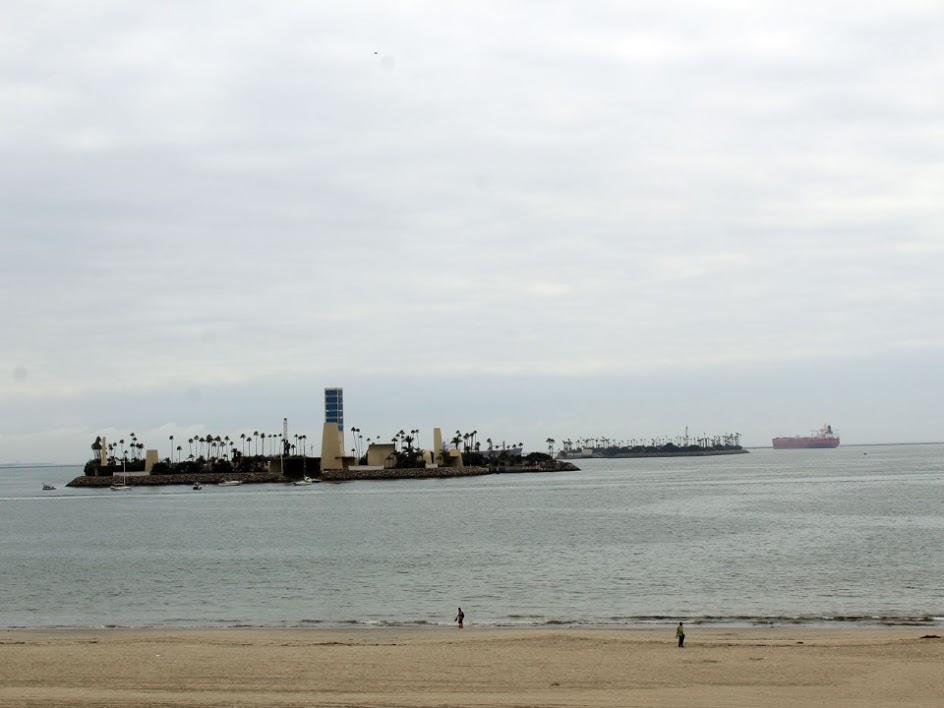
Pretty oil island
Peter: We find a parking spot and walk to the edge of the bluff to admire the view: the heavy port equipment far off… the Queen Mary and a visiting liner… the most beautiful “oil island”. You need to see it at night with its many-colored lights and illuminated waterfall. The city wouldn’t let them drill unless they made their oil platforms “pretty”.
“The THUMS Islands were built in 1965 to tap into the East Wilmington Oil Field. The landscaping and sound walls were designed to camouflage the operation and reduce noise, and they are the only decorated oil islands in the United States.”
Wikipedia
Long Beach Museum of Art
Peter: We walked west a short stretch to the Long Beach Museum of Art.
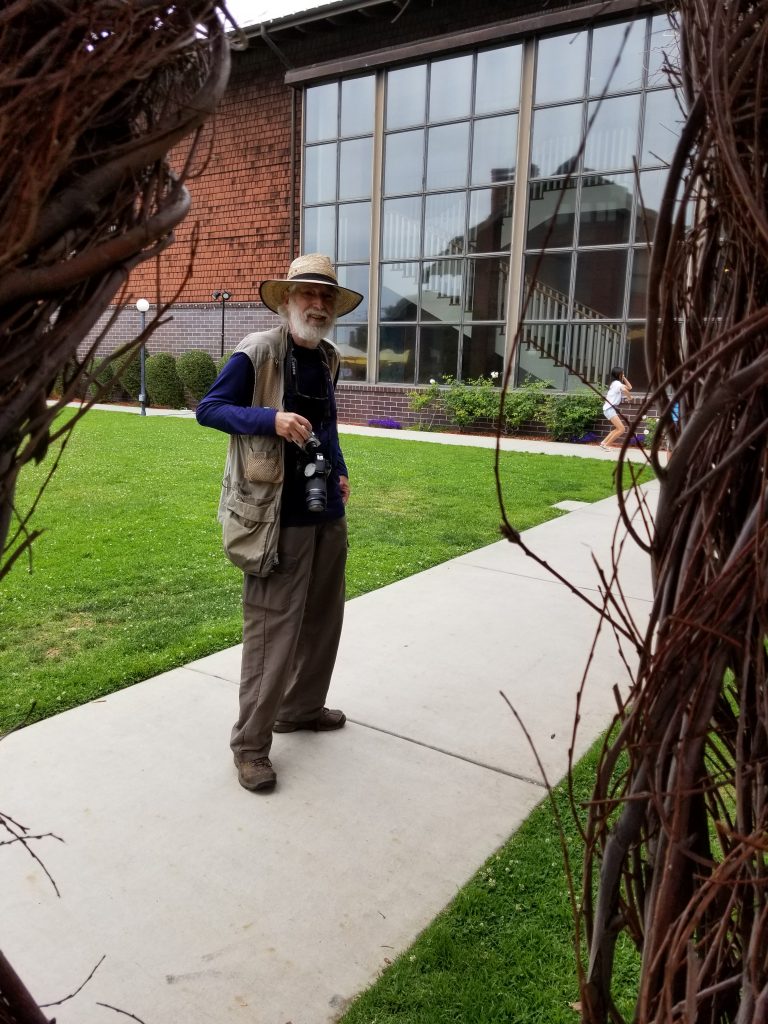
Peter exploring 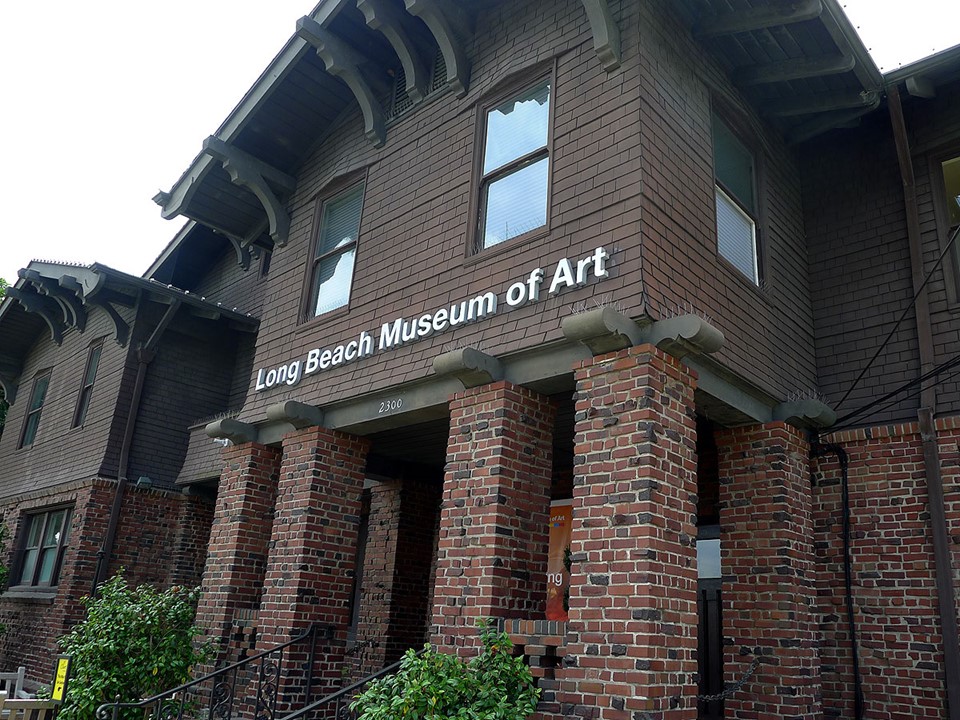
Long Beach Museum of Art 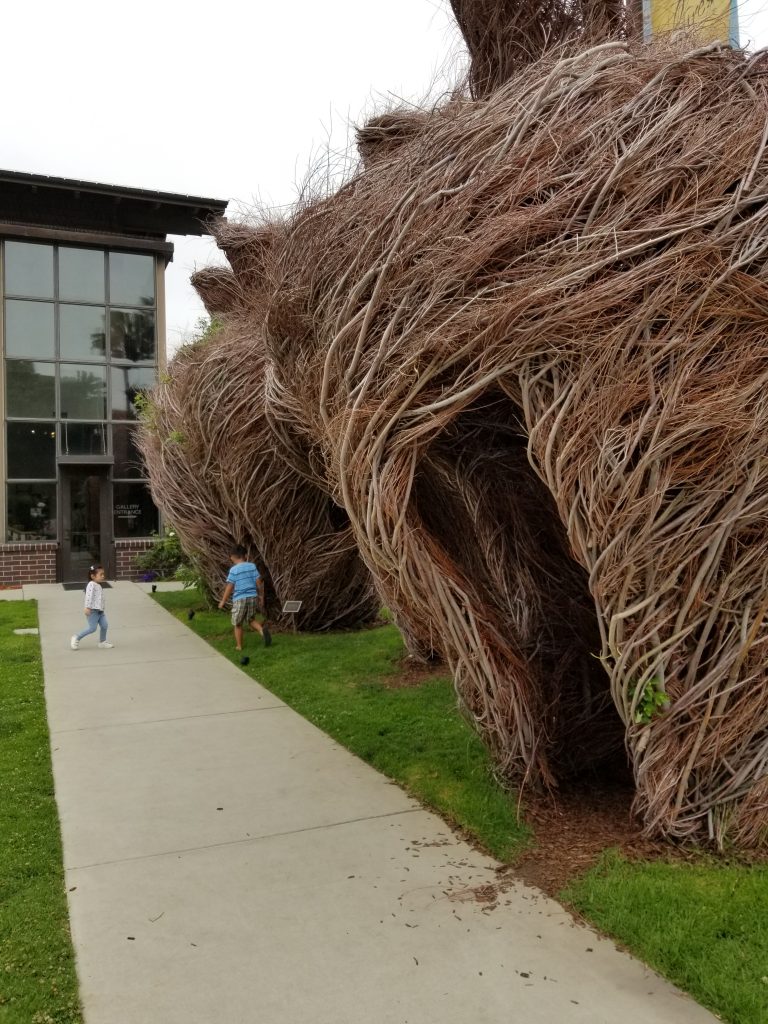
Giant woven sculptures 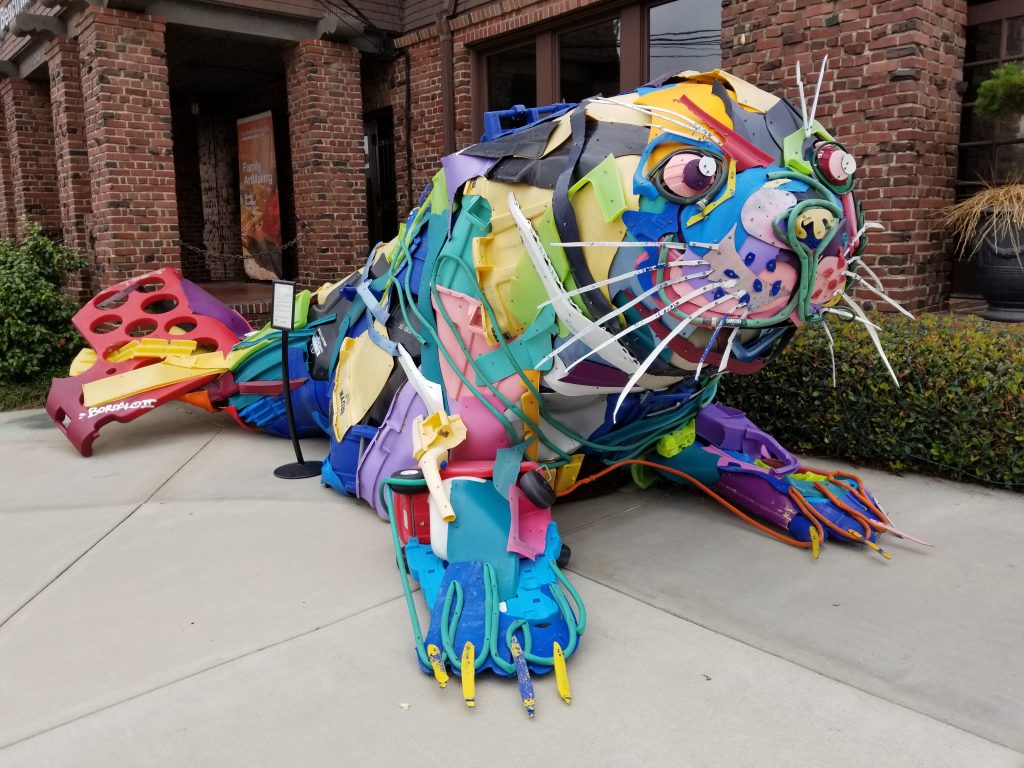
“Plastic Seal” by Bordalo II 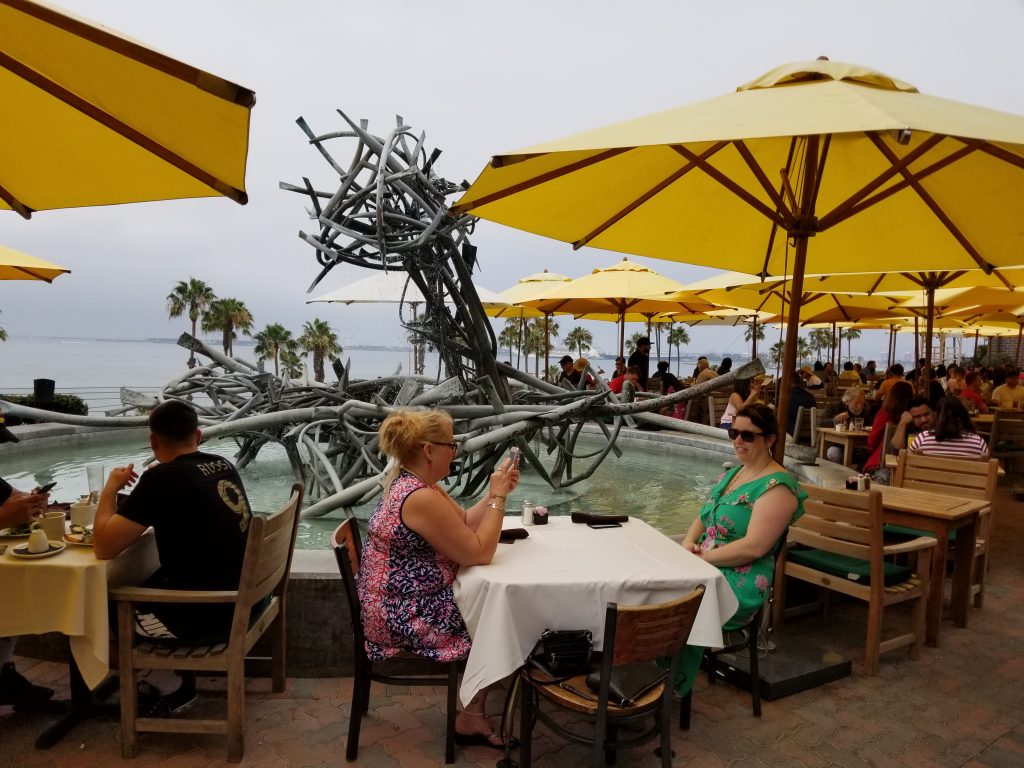
LBMA cafe seating by the sea
Peter: The LBMA was opened in 1950 in the historic 1911 Elizabeth Milbank Anderson House. Since then it has expanded. In addition to the interesting permanent collection, the museum mounts a variety of exhibits, often cutting-edge and modern.
On this visit I was particularly struck by Plastic Seal, from the series Big Trash Animals by Spanish artist Bordalo II.
“The idea is to depict nature itself… out of materials that are responsible for its destruction.”
Bordalo II
Lunch at SteelCraft
Peter: We ended our exploration with lunch at SteelCraft, a new Long Beach hot spot built out of shipping containers.
Chris: Besides being adorably designed, SteelCraft offers many gluten-free, vegetarian, vegan and custom hand-made options across a variety of flavor profiles. We shared vegetarian broccoli pizza and vegetarian gyoza – and I got locally-made ice cream. The cones are free! It was delicious.
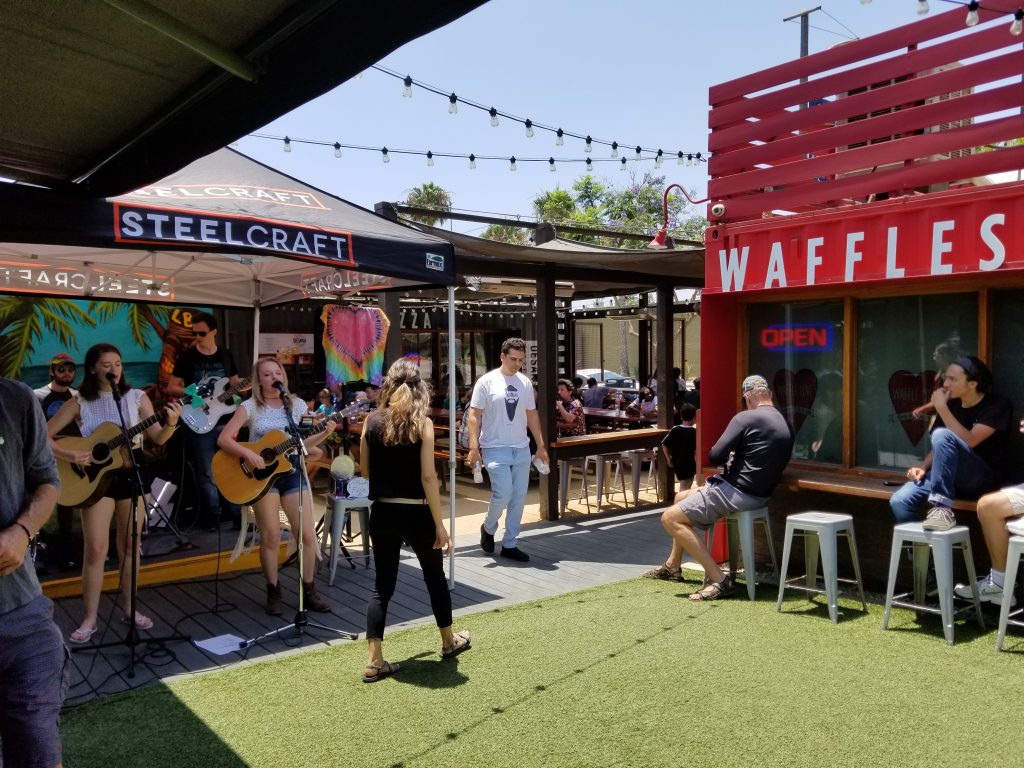
Welcome to SteelCraft 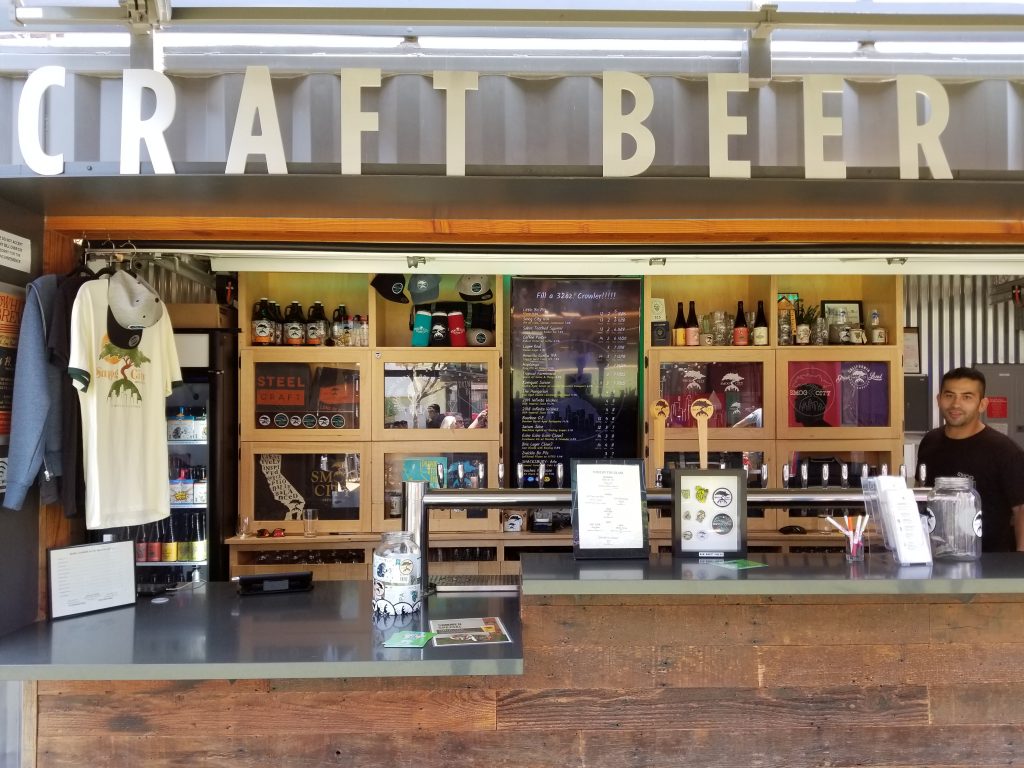
Beer on tap 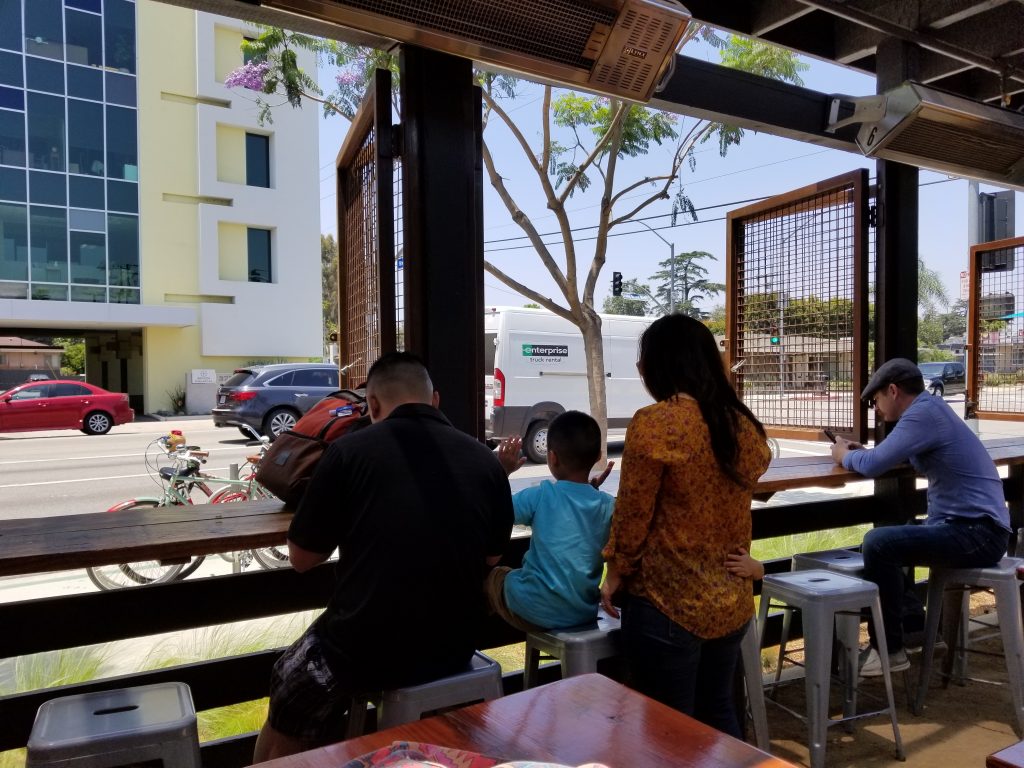
Room with a view 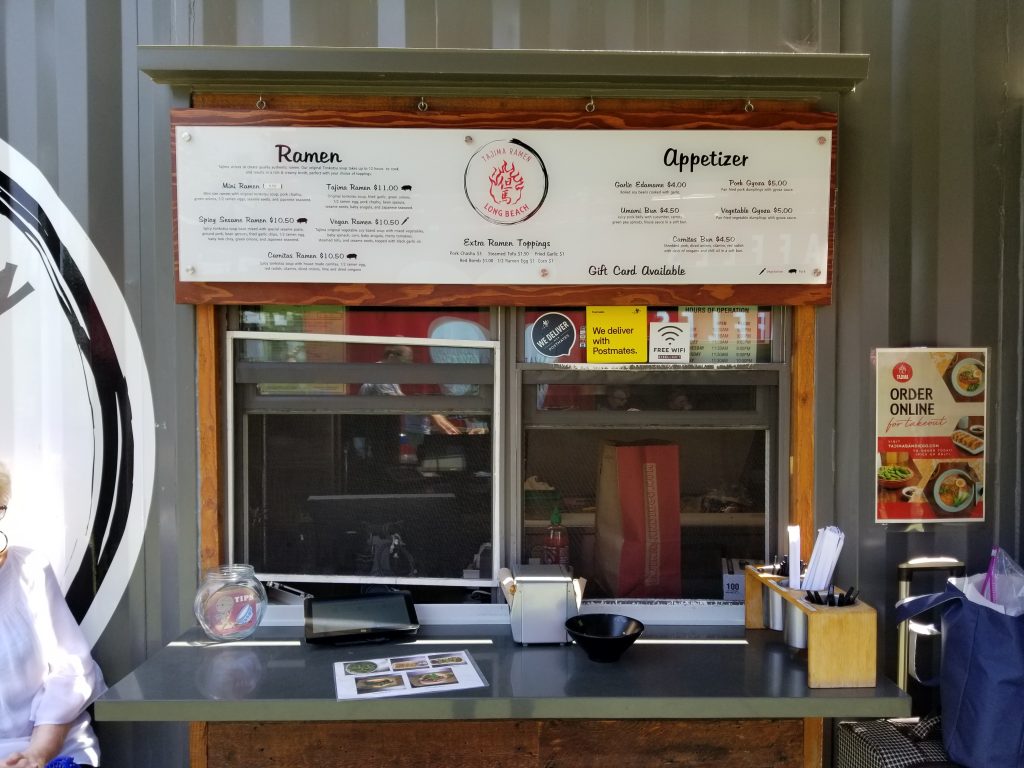
Ramen and gyoza 
Live music 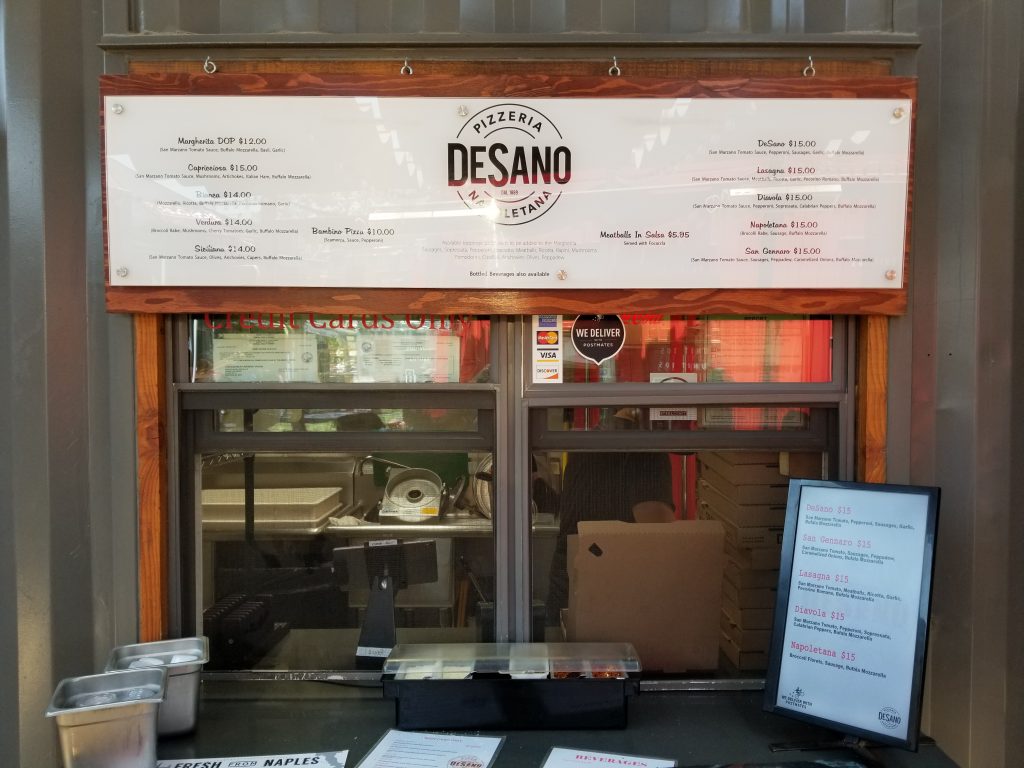
Pizza and salad 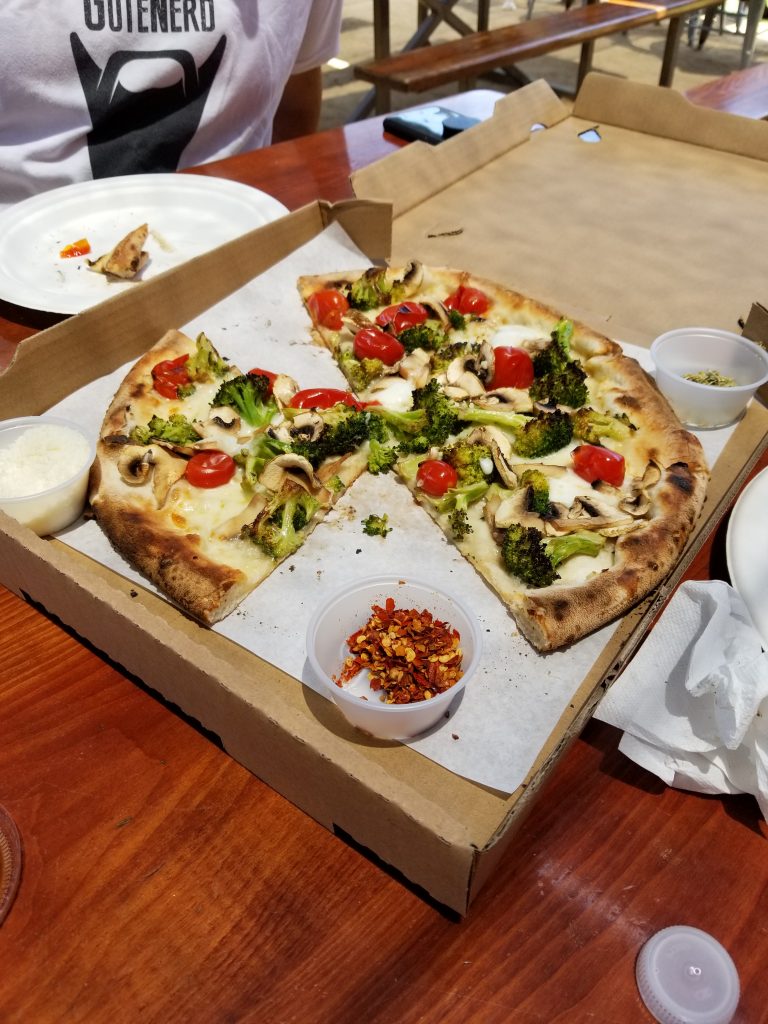
Vegetarian options 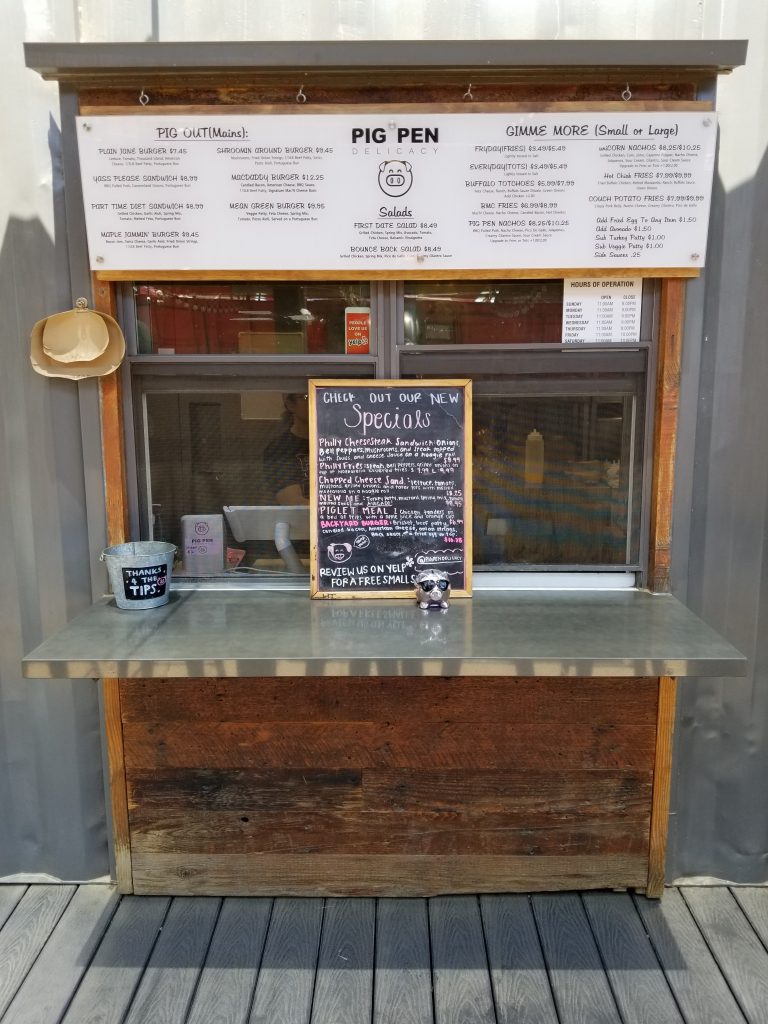
This little piggy got eaten 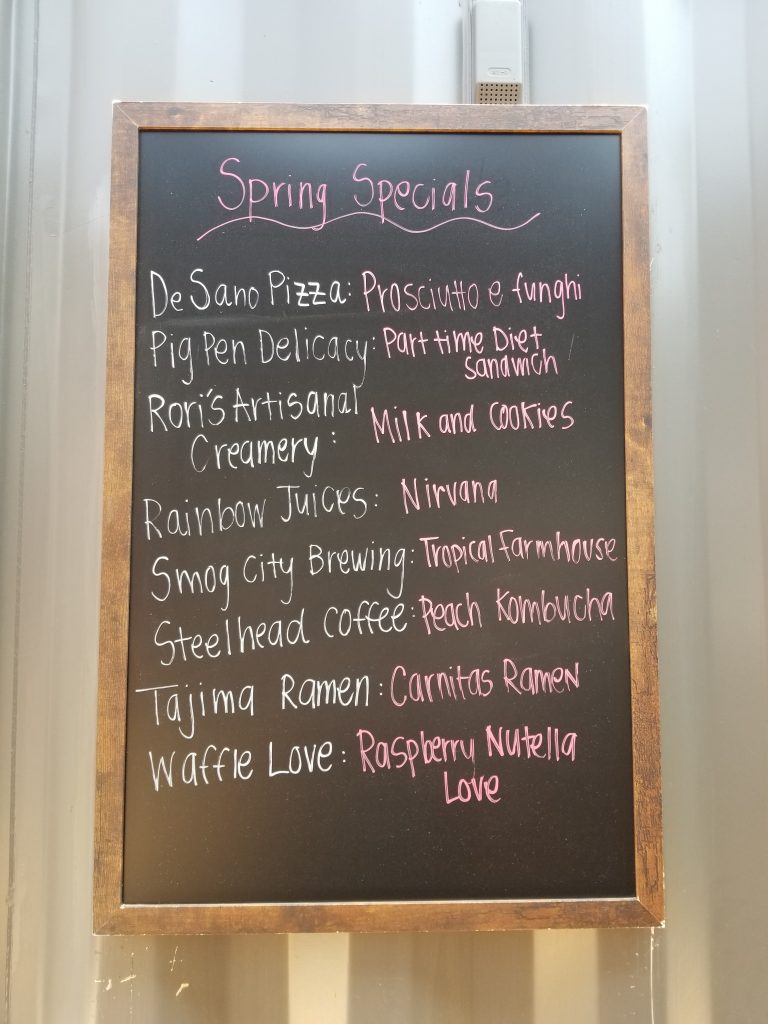
Seasonal specials 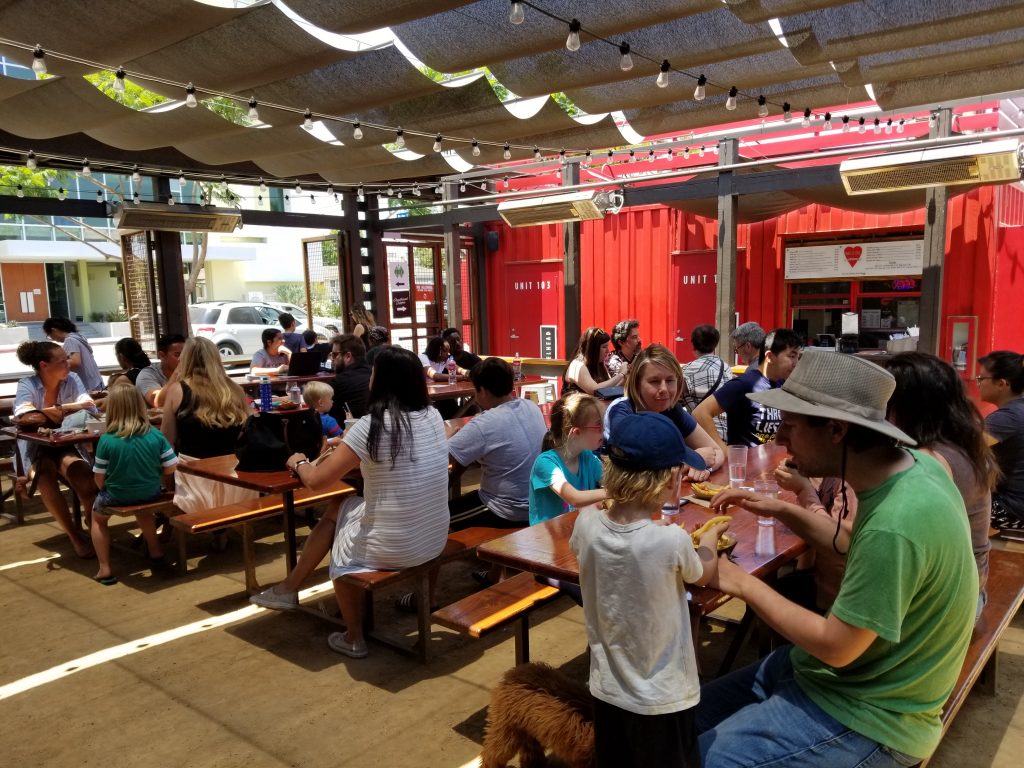
Cozy and colorful
Join Us Next Time!
Peter: Our next exploration, on Saturday, July 27, will be at the El Dorado Nature Center, one of Long Beach’s hidden gems. Come with us!
Chris: See you soon!
